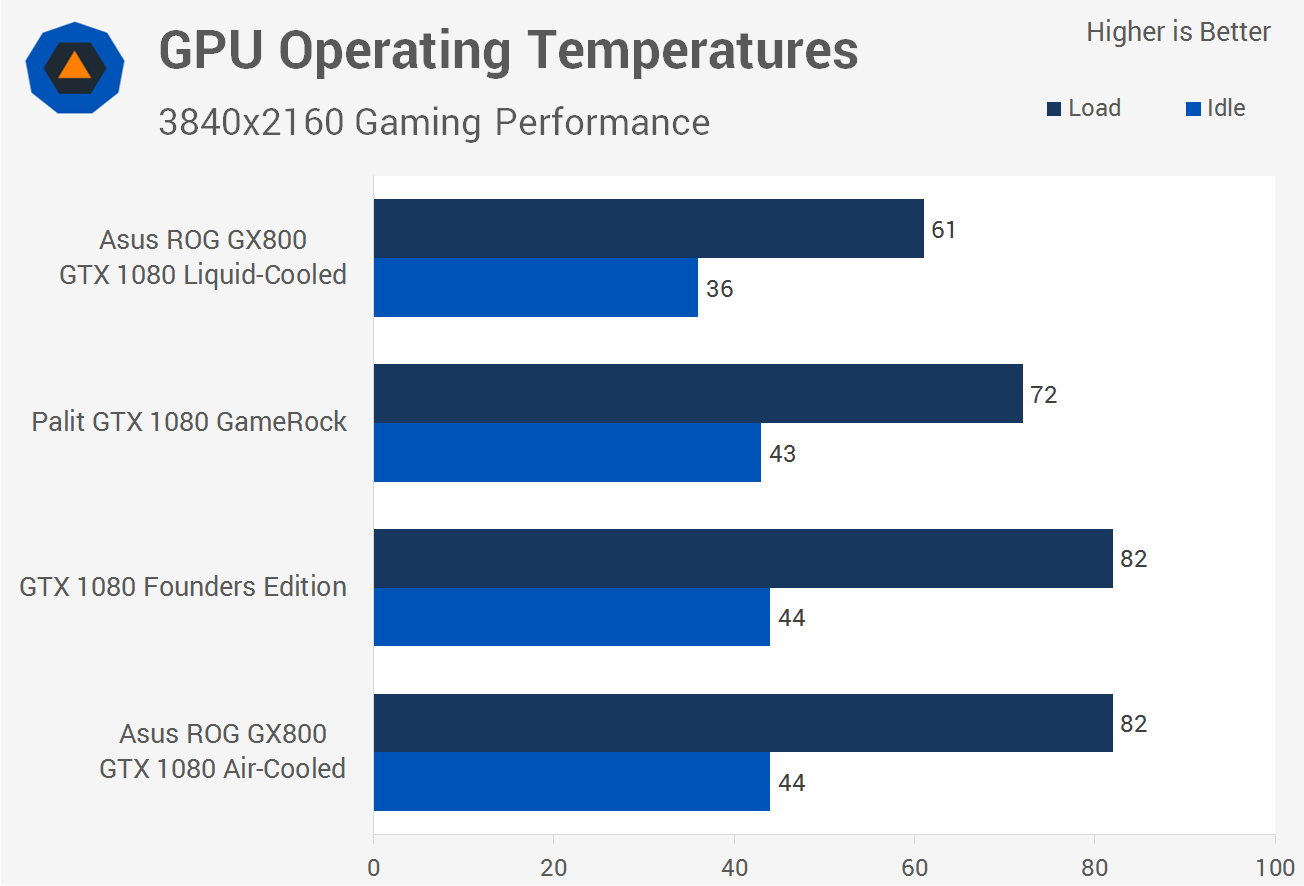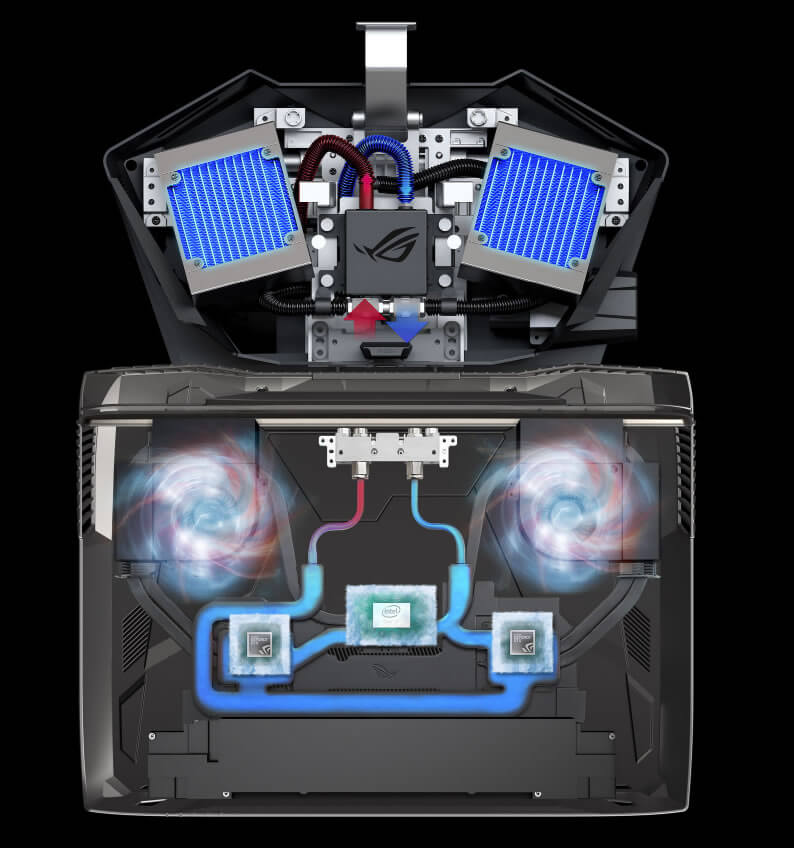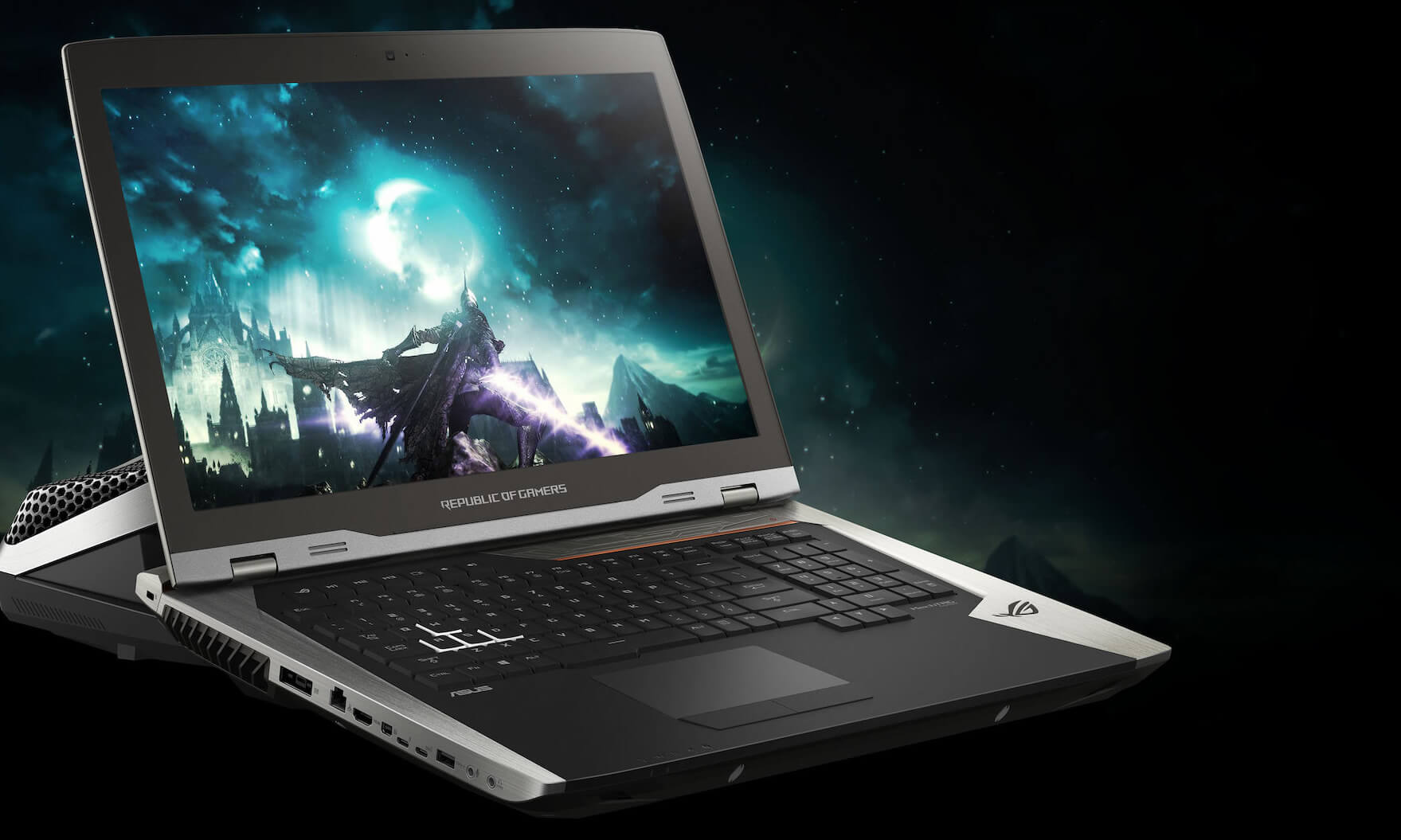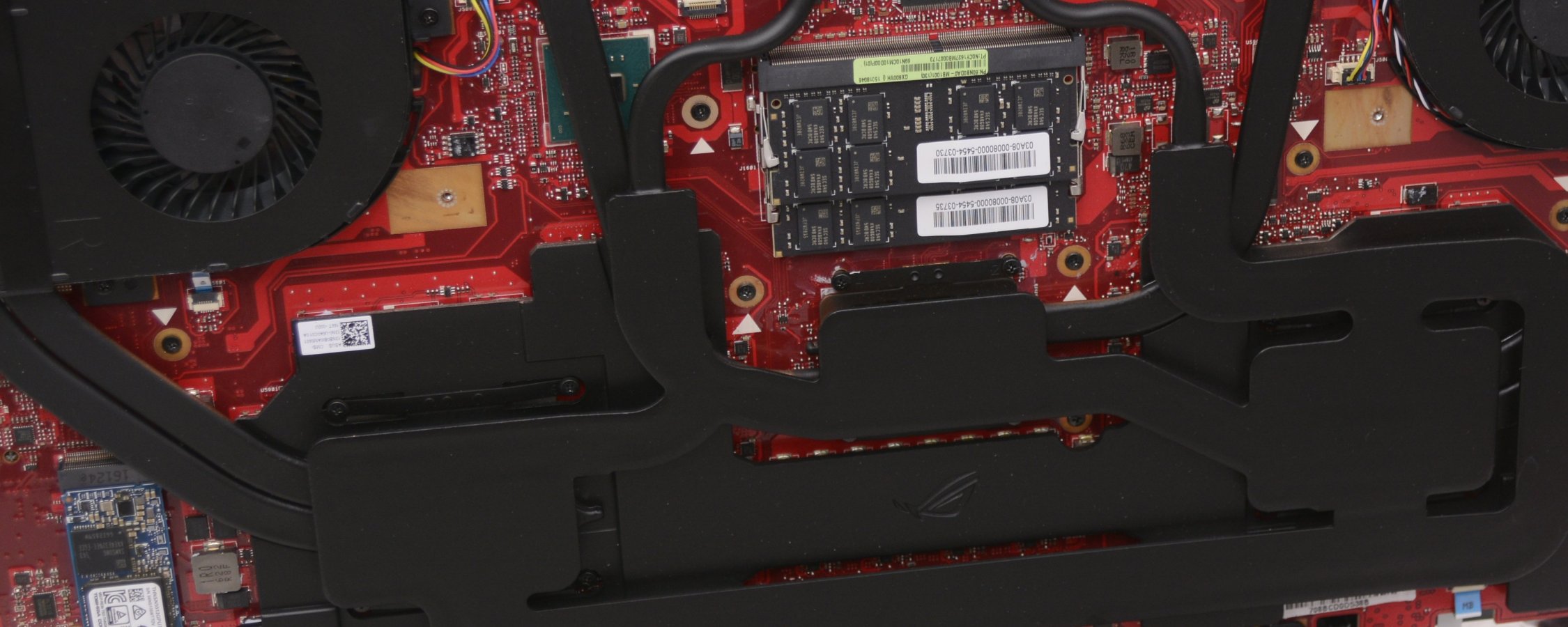Thermals, Closing Thoughts
The SLI temperature results below were recorded from the hottest GPU although in the case of the GX800 both GPUs operated at almost the same temperature. Taking the dock away for running the air cooling test on the GX800, those 1080 GPUs ran at the same 82 degrees under load as our Founders Edition cards. Though it isn't clear how hard the cards were running as they were only being feed 330 watts, when relying solely on the fans the GX800 is quite loud – clearly this is not how you intend to game. Once connected up to the dock the GTX 1080's are able to cool down to just 61 degrees and with a total of 660 watts to play with, the GX800 can work at maximum capacity.

Nvidia's claim that their Pascal GPUs will perform on par or close than their desktop equivalents was proven correct. Granted the Asus ROG GX800 is an extreme testbed, but even when air-cooled with SLI disabled, the mobile GPU (if you can call it that) could match our desktop test system.
This means your average GTX 1080-enabled laptop should have no trouble getting within 10% of the single GPU results shown here. Presumably if you are okay with a little fan noise – okay, quite a bit of fan noise – you should be able to achieve desktop-like performance without much trouble.

As impressive as a mobile GTX 1080 laptop is, we feel the less extreme GTX 1070 and 1060 models will be more attractive to the masses. I am extremely keen to get my hands on a GTX 1060 laptop which should deliver GTX 980 desktop performance. Given 1080p is a completely satisfactory resolution, in my opinion, for screens measuring 17" or smaller the GTX 1060 makes a heap of sense.
Nvidia has already shown us GTX 1060 powered laptops that are as thin as 18mm and as light as 4lbs. This for me is what will take gaming laptops to the next level, a truly portable device capable of ultra-quality performance in all the latest gaming titles at 1080p.
I know AMD is targeting laptop gaming with Polaris 11 and while that is going to be a completely different price category, I'm concerned that the huge disparity in mobile market share is only going to worsen for the red team given what Pascal has shown us. Power consumption is a big deal here and with Polaris seemingly only able to match what Nvidia achieved last generation, I can't see the laptop manufacturers chomping at the bit for Polaris.
Things could change in a few months' time once Vega arrives, but for now if you want a serious gaming laptop it will have to be powered by a GeForce GTX 10 series GPU.
As for the Asus ROG GX800 laptop, what can I say? The concept alone is crazy, but this prototype proves it works and work it does. Is it practical? Hell no! Will it be cost effective? I won't even dignify that with a response! But is it worth it? Well that's up to the user to answer. If you want the biggest baddest fastest gaming laptop of them all, then yes the GX800 is the one for you.
For now, we've been able to answer whether or not Pascal is just as impressive on the go and that answer is a resounding hell yes!

